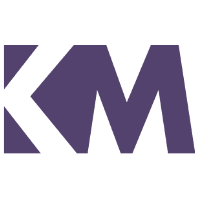Introduction
Driving traffic to your website or digital campaign is only half the battle. The real challenge lies in turning that traffic into paying customers. This is where Conversion Rate Optimization (CRO) comes in. CRO is a data-driven process that enhances user experience, refines website elements, and optimizes digital marketing campaigns to increase the percentage of visitors who take a desired action.
In this guide, we will explore the fundamentals of CRO, why it is essential for businesses, key strategies for implementation, and the tools that can help maximize conversions. Whether you run an e-commerce store, a corporate website, or a digital ad campaign, this guide will provide actionable insights to enhance your conversion rates.
What is Conversion Rate Optimization (CRO)?
Conversion Rate Optimization (CRO) is the process of improving your website or digital campaign to encourage visitors to complete a specific goal. This could be making a purchase, filling out a form, signing up for a newsletter, or any other action that aligns with your business objectives.
The formula to calculate conversion rate is:
Conversion Rate = (Number of Conversions / Total Visitors) * 100
For example, if your website gets 10,000 visitors per month and 500 of them make a purchase, your conversion rate would be (500/10,000) * 100 = 5%.
Why CRO is Essential for Businesses
Many businesses focus heavily on increasing website traffic but overlook the importance of converting existing visitors. CRO offers several benefits:
1. Maximizes Return on Investment (ROI)
Instead of spending more on ads to drive traffic, optimizing conversions ensures you get more from your current visitors, improving ROI.
2. Enhances User Experience (UX)
CRO focuses on making websites user-friendly, ensuring seamless navigation, faster load times, and clear calls to action (CTAs).
3. Reduces Bounce Rate
By refining website elements and removing conversion barriers, CRO keeps visitors engaged and encourages action.
4. Provides Data-Driven Insights
CRO relies on analytics, heatmaps, and A/B testing to determine what works best for your audience.
5. Increases Customer Retention
A well-optimized website improves customer satisfaction, leading to repeat purchases and long-term loyalty.
Key CRO Strategies for Websites and Digital Campaigns
1. Website and Funnel Analysis
Audit your website, landing pages, and sales funnels to identify areas for improvement. Look at bounce rates, exit pages, and conversion paths.
2. A/B and Multivariate Testing
Test different versions of elements like headlines, CTAs, images, and layouts to identify the best-performing variation.
3. User Behavior Analysis
Use heatmaps, session recordings, and user flow data to understand how visitors interact with your website and identify areas for optimization.
4. Landing Page Optimization
Ensure landing pages are clear, concise, and designed for conversions. Use strong headlines, persuasive copy, and compelling CTAs.
5. Checkout and Form Optimization
Reduce friction in checkout processes and lead forms by eliminating unnecessary fields and streamlining the experience.
6. Mobile and Speed Optimization
Ensure your website loads quickly and is fully responsive across all devices.
7. Ad Performance Enhancement
Refine ad copy, visuals, and targeting to improve conversions from Google Ads, Facebook Ads, LinkedIn Ads, and more.
CRO Tools to Improve Conversions
Several tools can help optimize your website and digital campaigns:
- Google Analytics – Tracks user behavior and conversion metrics.
- Hotjar – Provides heatmaps and session recordings.
- Optimizely – Conducts A/B testing and experimentation.
- Crazy Egg – Offers visual insights into visitor behavior.
- Unbounce – Helps create high-converting landing pages.
- HubSpot – Provides tools for lead generation and CRO automation.
Common CRO Mistakes to Avoid
- Ignoring Mobile Users – Ensure your site is fully optimized for mobile devices.
- Lack of Clear CTAs – Visitors should know exactly what action to take next.
- Slow Load Speeds – A delay of even one second can reduce conversions.
- Using Too Many Form Fields – Keep forms short and simple.
- Not Conducting Regular Testing – CRO is an ongoing process that requires continuous improvement.
Measuring CRO Success
To track CRO progress, monitor key performance indicators (KPIs):
Conversion Rate
Bounce Rate
Average Session Duration
Click-Through Rate (CTR)
Cart Abandonment Rate
Conclusion
CRO is a powerful strategy that maximizes the effectiveness of your website and digital campaigns. By improving user experience, refining landing pages, and leveraging data-driven insights, businesses can significantly increase conversions and revenue. Whether you are an e-commerce store, a service provider, or a B2B company, implementing CRO strategies will help you achieve better results without increasing traffic costs.
Start optimizing your conversions today and turn visitors into loyal customers!







 Stay ahead in the digital world! Don’t just read—put the insights from The KWETU Blog into action today and watch your brand grow.
Stay ahead in the digital world! Don’t just read—put the insights from The KWETU Blog into action today and watch your brand grow. 
